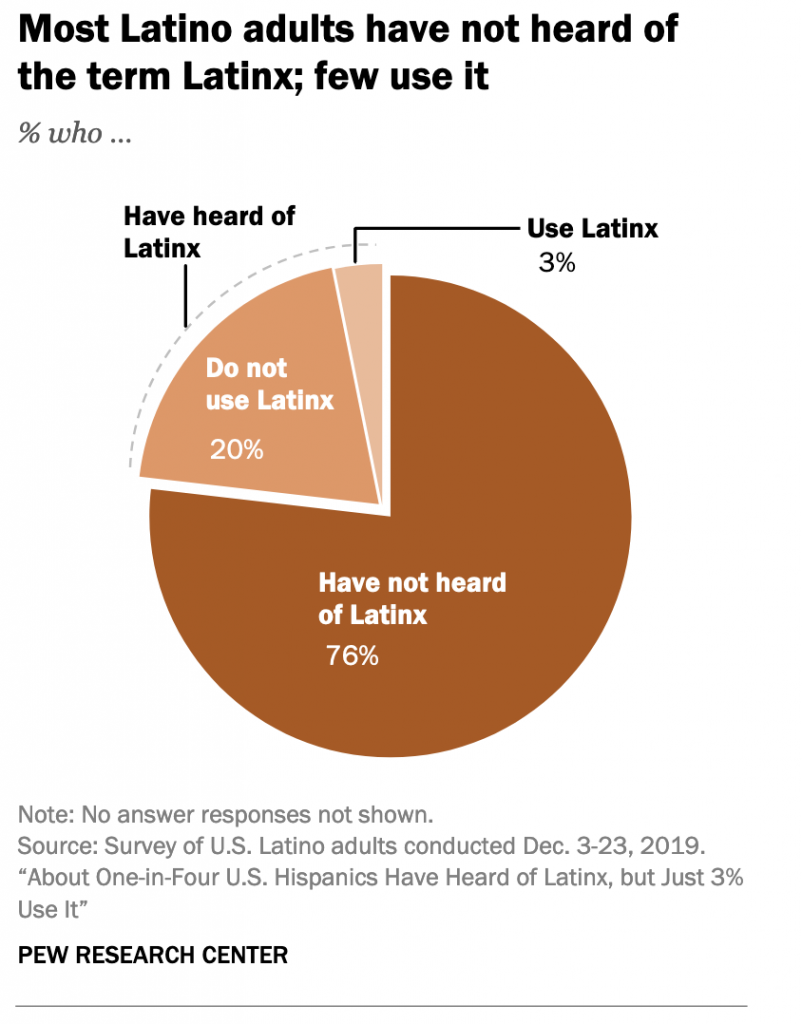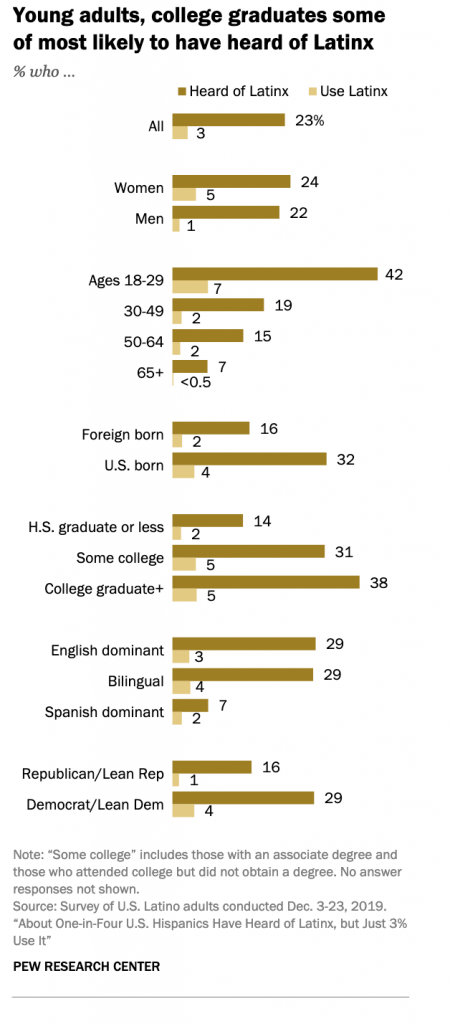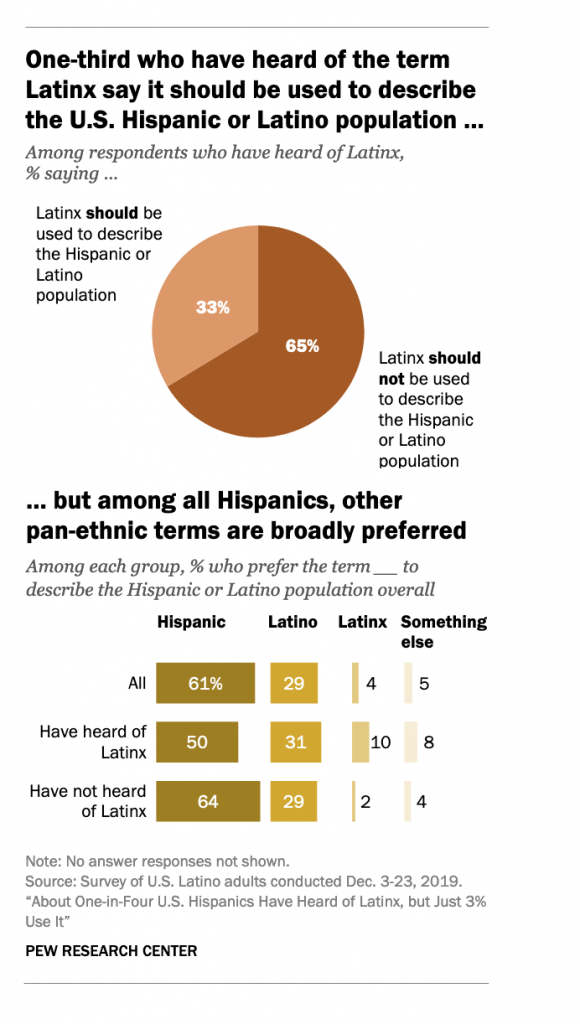
According to a new report by the Pew Research Center, only 23% of U.S. adults who self-identify as Hispanic or Latino have heard of the term Latinx, and just 3% say they use it to describe themselves, according to a nationally representative, bilingual survey of U.S.Hispanic adults conducted in December 2019 by Pew Research Center. The gender-neutral pan-ethnic label has emerged as an alternative to Hispanic and Latino, and has been used by media outlets, corporations, governments, and universities alike to describe the nation’s Hispanic population.

The term Latinx came into the cultural mainstream when many countries and cultures were aiming to begin using more gender neutral pronouns in different languages. The term was officially added to the Merriam-Webster dictionary in 2018, and according to the dictionary’s website, “The male/female binary is inherent in the Spanish language, which lacks a neuter noun form. Thus, nouns are either masculine, generally indicated by an “-o” ending (Latino), or feminine, indicated by “-a” (Latina). The same applies to Portuguese and other Western Iberian languages. Latinx purposefully breaks with Spanish’s gendered grammatical tradition. X signifies something unknown and is used in Latinx to connote unspecified gender. A similar use of “x” is in Mx., a gender-neutral title of courtesy that is used in place of gendered titles, such as Mr. and Ms. It has been suggested that the use of “x” in Mx. influenced Latinx.”

According to the Pew Research Center, While only about a quarter of U.S. Hispanics say they have heard the term Latinx, awareness and use vary across different subgroups. Young Hispanics, ages 18 to 29, are among the most likely to have heard of the term – 42% say they have heard of it, compared with 7% of those ages 65 or older. Hispanics with college experience are more likely to be aware of Latinx than those without college experience; about four-in-ten Hispanic college graduates (38%) say they have heard of Latinx, as do 31% of those with some college experience. By comparison, just 14% of those with a high school diploma or less are aware of the term. In addition, the U.S. born are more likely than the foreign born to have heard the term (32% vs . 16%), and Hispanics who are predominantly English speakers or bilingual are more likely than those who mainly speak Spanish to say the same (29% for both vs . 7%). Young Hispanic women are among the the most likely to use the term.

Among those aware of Latinx, one-in -three say it should be used to describe the nation’s Hispanic or Latino population. Across demographic subgroups, the term Hispanic is preferred by about half or more of respondents. Those who are third generation or higher (72%) are among the most likely to prefer
Hispanic. Even among those who have heard the term Latinx, 50% say they prefer Hispanic to describe the nation’s Hispanic or Latino population.Meanwhile, immigrants, college graduates and predominantly those who speak mainly Spanish are among the most likely to prefer the term Latino.
Read the report in its entirety here.





